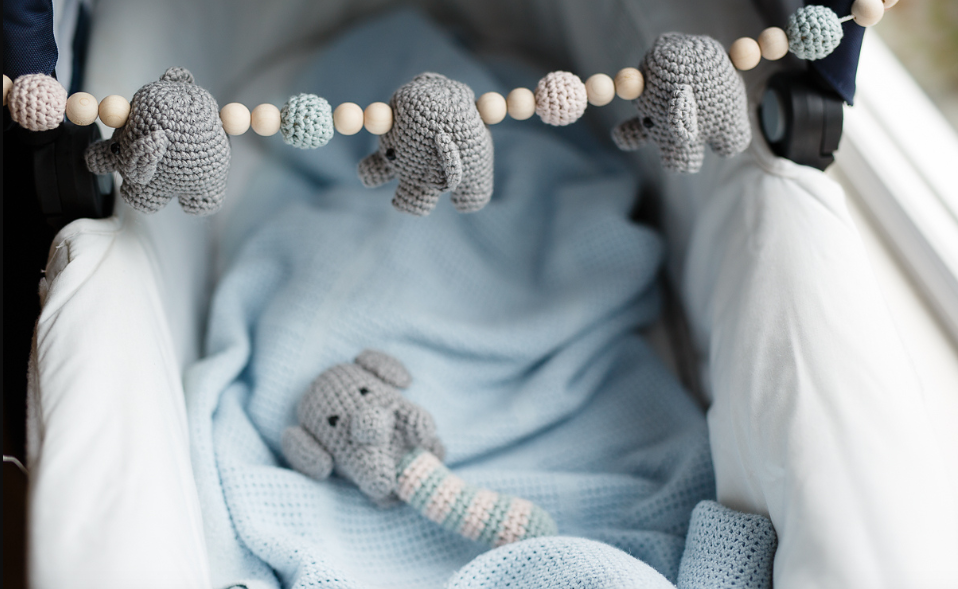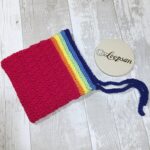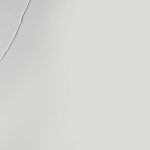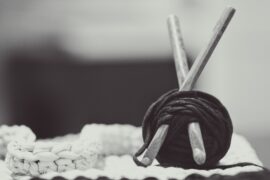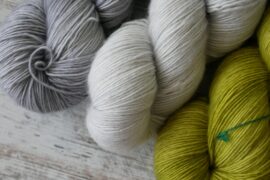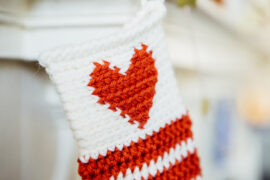Starting a new hobby might seem a little bit overwhelming. Where do I start to create those amazing things you see crochet? What tools and materials do I need? What does it cost me?! But don’t worry I’ve got you sorted!
The Beginner Crocheter Essentials
First of all to get started you need two things a crochet hook and one ball of yarn. Thats it! No other fancy gadgets. Even though after you’ve got hooked you might want those too.
Want the full list of tips? Here’s a mini-contents section so you can go to any directly.
- Tip 1 – Stitches can be seen better in a light coloured yarn
- Tip 2 – Metal hooks will guide the yarn more smoothly
- Tip 3 – Use a 5mm hook as your default size
- Tip 4 – US crochet terms are easier to understand than UK/Australia terms
- Tip 5 – Crocheting is much more fun when your hair is tied back
- Tip 6 – Have a dedicated hook for a project to ensure an equal tension
- Tip 7 – Do not skip the gauche/tension swap!
- Tip 8 – Unravel is good and helps you to improve
- Tip 9 – Experiment with colour
- Tip 10 – Have a dedicated crochet notebook ready
- Tip 11 – Look after your tools
- Tip 12 – Enjoy your new hobby
Tip 1 – Stitches can be seen better in a light coloured yarn
That’s why I would always recommend starting with a lighter colour. Think of traditional baby colours which will give you enough contrast to see your stitches clearly. Stay away from dark blue or black. Even for a pro, it is difficult to see their stitches in a black yarn in artificial light. So better stay away from darker colours until you’re ready to up your gadget game.
Tip 2 – Metal hooks will guide the yarn more smoothly
I always recommend metal hooks for beginners, and the fancy handles are optional. I’m yet to find a plastic hook that comes close to a metal hook. Wooden hooks are very pretty to look at but your hook/yarn combo will need to be right for it to work properly, therefore, if in doubt, just use a metal hook.
Tip 3 – Use a 5mm hook as your default size
It is difficult to know what size of hook to buy when you first get started. In all of my lessons, I start my students off with Aran/ worsted weight yarn and a 5 mm hook. A 5mm hook is perfect as it’s not too small, but also not too bulky. And even when you end up with slightly looser tension, your project won’t end up full of holes.
Tip 4 – US crochet terms are easier to understand than UK/Australia terms
Are US terms easy to understand, and does it really matter? The short answer is, no. At the end of the day a cheat sheet will help you to translate patterns written in the “wrong” crochet language. You’ll find that for all of my patterns you automatically get both versions :), so you can choose your favourite language. Personally, I think in US terms as this is how I grew up, but since I’m based in the UK I will always provide a UK term version of my patterns.
Tip 5 – Crocheting is much more fun when your hair is tied back
What is she on about now, you might think. But I can promise there is nothing more annoying than having to unravel your stitches cause you accidentally crocheted some loose hair into your project. I’ve got long hair so I might have done this myself several times over the years…
Tip 6 – Have a dedicated hook for a project to ensure an equal tension
It might not be applicable at the start but as soon as you get hooked I promise your selection of tools will grow too. However, changing the hook during a project is never a good idea unless the pattern calls for a different size. Hooks differ between manufacturers and plenty of things can affect your final tension. That’s why it’s easier to keep the same hook.
Tip 7 – Do not skip the gauche/tension swap!
It might seem like an unnecessary pain to do it before you get started on your actual project. However, making sure that your tension is matching the pattern will ensure that your final project ends up in the anticipated size. Also, you may find that the tension between designers is different. I’m personally a tight crocheter so my hook size will always be bigger than someone who crochets loosely.
Tip 8 – Unravel is good and helps you to improve
Don’t see unravelling as a failure. It’s a learning curve and the good thing is that you can reuse the yarn. Unlike sewing, where when you’ve cut the fabric in the wrong place you can’t go back!
Tip 9 – Experiment with colour
After you’ve managed the basics, the next step is to play with some colours – or go monochrome. Explore how simple colour changes change the look of your project completely.
Tip 10 – Have a dedicated crochet notebook ready
There is nothing more annoying when you start a project than having to stop it and come back to it 2 weeks later, only to realise that you can’t remember what pattern it was, or which hook size you used. Therefore, it’s always handy to keep a record of what yarn and pattern you used. Use the notebook to also keep track of how far you’ve got in your project. I count as I go, which is much easier than counting rows half way through the project
Tip 11 – Look after your tools
When you start crocheting a bit you’ll notice that the yarn might not be as slippery across the hook as it was at the start. This is usually caused by build up on your hook. This especially can happen really quickly if you’re a regular hand creme user. Therefore I recommend hand washing your crochet hooks on regular basis. You’ll be surprised how much better they are to work with after they had a quick wash with some dishwashing liquid and water. Obviously, dry them properly before they come too close to your project.
Tip 12 – Enjoy your new hobby
Last but not least, enjoy it! It might seem like a really daunting task but you’ll be surprised how many amazing projects you can actually do with only one or two basic stitches in your portfolio!
Stay updated and receive exclusive discount codes in your email inbox
Happy Crocheting!

